I just installed a UV light in-duct air purifier in our cabin HVAC system. So far I’m very impressed and it seems to be working!
In our endless pursuit to improve the air quality at our cabin, we’ve done a lot – including the installation of a crawlspace vapor barrier, and sump pump, a Panasonic air-exchanger, and a 4″ media filter in our HVAC unit.
So far, our results haven’t been perfect. My biggest complaint is a faint funky, musty scent that I would guess is related to our crawl space. I would guess we have a bit of a volatile organic compound (VOCs) issue. Despite the 70% improvement my previous interventions provided, I am still looking for something closer to perfection. Hopefully UV purification is that big, final piece of the puzzle.
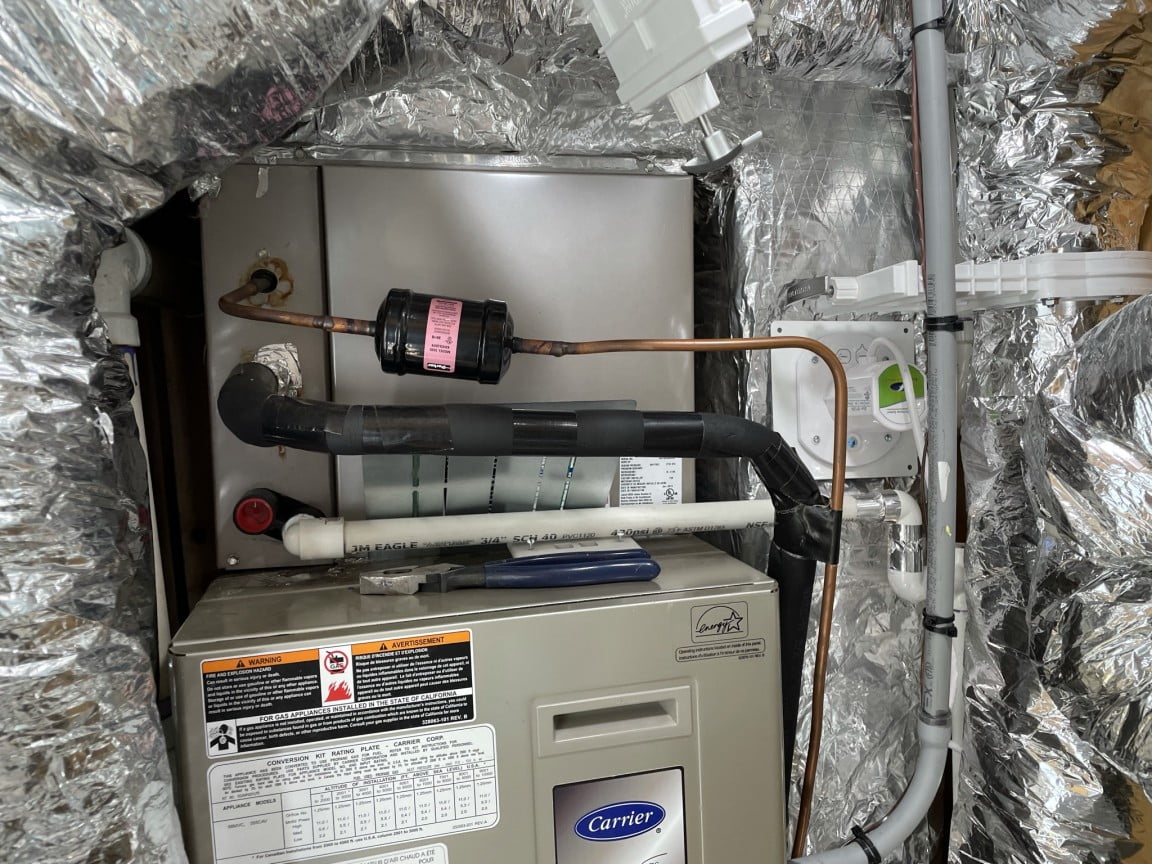
UV light HVAC sterilization can help reduce pathogens like viruses, bacteria, fungus and molds and greatly reduce odors and VOCs in your home.
How Does UV Light Work as a Disinfectant?
UV light is the invisible light between 200 – 400 nm in wavelength. UV light is sub-categorized as UV-A, UV-B or UV-C based wavelength. UV-A occupies the wavelengths of 315 – 400 nm, UV-B 280-315 nm and UV-C 200 – 280nm.
UV-C light (or radiation) is effective in killing bacteria and viruses. UV-C radiation disrupts the nuclear material of bacteria and viruses (DNA and RNA), killing them and preventing them from replicating. UV-C light disinfection systems or UV-C germicidal irradiation (UVGI) air purification systems work by providing a source of concentrated UV-C light.
The effectiveness of UV-C light sterilization is dependent on the amount of radiation delivered to the target and therefore depends on the UV-C light source intensity and the length of exposure.
HVAC UV-C sterilization devices benefit from the contained and relatively small area in which they operate. When your furnace fan is running, the air from your home must pass through the UV-C light field many times each day, but the speed at which the air is moving through limits the exposure circulating microbes will have the UV-C light.
Although I didn’t find conclusive research to support the use of residential HVAC UV-C for “real-time” air flow disinfection purposes, there have been studies that show effective reduction in bacteria, fungus, and viruses with UV-C use. UV light treatment is also commonly used, although with differing delivery techniques, in health care, transportation, hospitality and food service environments. Also, the SARS CoV-2 virus has been shown to be sensitive to the effects of UV-C radiation.
Bottom line, UV-C light kills a variety of pathogens including the Covid-19 virus and likely helps reduce the circulating bacteria, viruses, molds and fungi with HVAC use. The germicidal action of UV-C light depends on exposure time, so much of the disinfectant benefit of these systems may be keeping the inside of the furnace clean, like the air conditioning coil, where many of these systems are mounted. These systems do kill pathogens, but their effectiveness in sterilizing passing air flow will likely be limited by the short exposure time.
UV-C Light Can Also Reduce Volatile Organic Compounds and Odors
UV-C radiation has been shown to significantly reduce the concentration of volatile organic compounds (VOCs), bio-aerosols and other chemical air pollutants and odor causing compounds.
In a recent study published in the International Journal of Environmental Research and Public Health, examined the effectiveness of UV-C systems in reducing volatile organic chemical pollutant concentrations in several environments including; medical clinics, kitchen waste areas and underground parking facilities.
The results of the studies showed reductions of these compounds by up to 30% after one week of UV-C use and up to 76% after two weeks of treatment.
Use Care When Using UV-C Light Systems
UV light systems do however have some potential risks. Direct exposure to UV light can damage your eyes and skin and has been known to potentially cause cancer with extended exposure.
Knowing this, never exposure yourself to UV light sources without proper eye and skin protection. UV-C germicidal units installed properly within your HVAC duct work should not pose health risks if installed properly and do not allow UV-C radiation to escape from within the ductwork where it is mounted.
UV light sources can also generate ozone. Ozone (O3) is an unstable gas with strong oxidizing effects and potential health effects with exposure. UV light sources producing lower wavelength UV light (185 nm) can generate ozone. Newer lamp designs using specialized glass nearly eliminate ozone production by UV-C germicidal lamps. Verify the UV-C system you are planning to use does not generate ozone prior to installation.
Where To Install Furnace UV Light Systems
Most HVAC UV-C germicidal purification units can be mounted on either the return of supply side of your HVAC duct work.
Many manufacturers recommend mounting their UV-C systems on the supply air side of the furnace in front of or just downstream from the air conditioning coils (also known as the A-coil). In this position, UV-C light will help sterilize the air conditioner coils which are prone to fungal and mold growth.
Units can also be mounted on the return side of the air handler/furnace as well, but may not provide much benefit sterilizing the air conditioning coils located on the other (supply side) of the furnace.
No matter where you mount the unit, understand that UV light exposure will damage most organic materials. Plastics, rubbers, paper and other organic materials with quickly breakdown with direct UV light exposure. If you mount a UV light unit near the air filter for your furnace, the filter material may quickly degrade.
UV light units mounted over the air conditioning coil may damage any plastic plumbing or drip pans in proximity to the unit. Check with your furnace manufacturer to determine if your furnace air conditioning coil drip pan is UV light safe. If it is not, you may need to install a UV safe drip pan or install the UV light unit far enough away from the AC drip pan to avoid damaging it.
Sources and Additional Reading:
- Ultraviolet (UV) Radiation, FDA, 08/19/2020, https://www.fda.gov/radiation-emitting-products/tanning/ultraviolet-uv-radiation
- UV-C for HVAC Air and Surface Disinfection, Daniel Jones and Michael Ivanovich, AMCA, 10/01/2020, https://www.amca.org/educate/articles-and-technical-papers/amca-inmotion-articles/uv-c-for-hvac-air-and-surface-disinfection-2.html
- A Critical Review on Ultraviolet Disinfection Systems against COVID-19 Outbreak: Applicability, Validation, and Safety Considerations, NIH Ameican Chemical Society Public Health Emergency Collection, Milad Raeiszadeth and Babek Adeli, 10/14/2020, https://www.ncbi.nlm.nih.gov/pmc/articles/PMC7571309/
- Efficacy of the UV-AIRE UV-16/120 Against Surface SARS-CoV-2, Innovative Bioanalysis, Inc., 06/16/2021, https://www.fieldcontrols.com/wp-content/uploads/2021/06/Field-Controls-UV-16-Report-DRAFT.pdf
- The Study of an Ultraviolet Radiation Technique for Removal of the Indoor Air Volatile Organic Compounds and Bioaerosol, Int J Environ Res Public Health., 2019 Jul; 16(14): 2557., Chao-Yun Liu, Chao-Heng Tseng, Huang-Chin Wang, Chuan-Fa Dai, and Yi-Hsuan Shih, https://www.ncbi.nlm.nih.gov/pmc/articles/PMC6678761/
- Ozone Generation by Ultraviolet Lamps, Holger Claus, 02/03/2021, https://doi.org/10.1111/php.13391
UV-C Germicidal Irradiation (UVGI) HVAC System Options
UV-C HVAC air purification systems are common, affordable and easy to install. Multiple manufacturers supply various UV light purification units. Honeywell, Field Controls, Lennox, and other major HVAC makers offer UV air purification units. Beware of inexpensive off brand units that may use cheaper UV lamps which may generate ozone.
The main options to consider for these HVAC UV air purification units are:
- Lamp size (output) – larger HVAC systems generally benefit from higher output units
- Unit dimensions and duct size/width – use a system that will fit into your duct work
- 120v vs. 24v – 120v systems can be plugged directly into a receptacle while 24v systems require a transformer (you can use a simple plug-in transformer).
- Air flow sensors, power cycling – reduces bulb use
- Add-ons – some units feature catalytic mesh/surfaces/filters intended to enhance VOC and odor reduction
- Inspection window – many units have visual ports to verify lamp function
For my cabin HVAC purification project, I was looking for a direct plugin 120v system that was compact, 16″ wide and high quality. I was considering the Honeywell AirBRITE purifier, but this unit requires an added transformer and the bulb is only 16 watt. Probably plenty, but the unit selected has a 30 watt bulb.
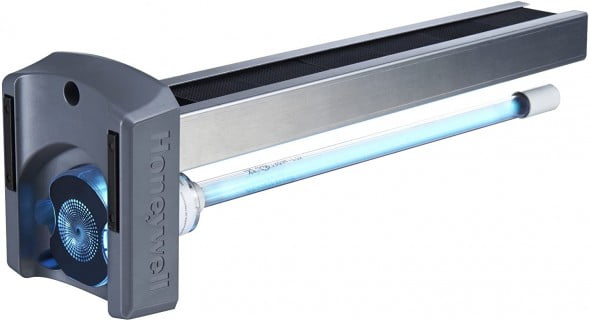
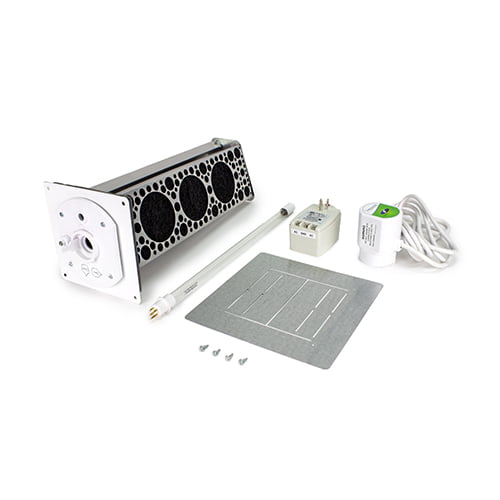
After a bit of review, I decided to purchase the Field Controls Duo 16/120v UV unit. I like the large catalyst surface area, which theoretically improved the photocatalytic elimination of VOCs and odors. Indeed, this is my primary goal for this project – to reduce our low level funky cabin smells.
Read on for a walk through of the relatively easy install. It only took me an hour to get this unit installed and running in our cabin Carrier furnace. And please note that you should only need a single unit for your system, the three different UV units listed under the Supplies header is only to provide a few different options and price points.
OVERVIEW | UV HVAC light Install
SUPPLIES LIST | UV HVAC light Install
TOOLS LIST | UV HVAC light Install
STEPS | UV HVAC light Install
- Order UV Air Purifier, Gather Tools and Supplies, Plan UV Unit Placement.
Select and order one of the UV HVAC air purifier units. You typically only need one for a standard size furnace or air handler. I like both the Honeywell units and the Field Controls units. There are many other quality units as well. The advange of the Honeywell units is their popularity and ease of order replacement parts, etc.
I ordered the Field Controls unit (Duo-16/120v), as I was intrigued with the rather robust catalytic alloy substrate and potential for enhanced VOC and odor removal. If you would like to order the Field Controls unit, you can get it on the SupplyHouse.com site. This is where I ordered mine.
Once you get the unit, assemble you tools and some foil HVAC duct tape and head to your furnace. Consider mounting locations on your furnace/air handler.
Many manufacturers recommend mounting the unit just above or downstream from the air conditioning coil a-frame in the supply side of the plenum or ductwork. This position has the advantage of bathing your a-frame coils with UV sterilizing light and will help keep your coils clean and free of mold and fungi and other microbes.
The disadvantage of mounting the UV unit here is the potential for damage to the coil pan and any other plastic or rubber components nearby. If you have a newer furnace (less than a few years old), you likely have a UV safe coil and coil pan. If unsure, contact the manufacturer and find out. Replacing leaking coil pans is no fun!
The other option is to mount the unit in the return side ductwork. The advantage of this mounting position is you will avoid damaging susceptible coil pans. The disadvantage of mounting the unit in the return ductwork is you will loss much of the air conditioning coil disinfecting action. You may also damage standard air filter elements if too the unit is mounted too close to these. There are UV safe air filter elements available.
If your goal is to eliminate VOCs and odors, mounting the unit on either the supply or return side is probably of similar efficacy.
I choose a compromise, mounting my unit a bit downstream on the supply side ductwork. My thinking is some of the UV light will reach the air conditioning coils without excess exposure of the drip pan, which is likely not UV safe. I did photograph my air conditioning coils and they look pristine after 10 years, so I doubt I need much of the coil sterilization effect anyway. I’m mainly hoping for VOC and odor reduction.

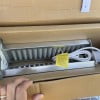
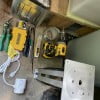
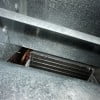
- Select a Mounting Location for the UV Unit and Create Cutout.
Pick a spot on your ductwork to mount your UV unit. Using the supplied template, mark the cutout on the duct where you plan to install the unit.
Pay attention to any mounting orientation related to air flow as directed by the manufacturer. This is especially true for units with catalytic mesh filters which usually are positioned downstream from the UV source.
Once marked, remove any insulation covering the duct. Drill starter holes at the corners as needed and then cut along the templated lines to open the duct mounting location.
Once open, check the fit of the unit and adjust as needed. Remove any burrs and use foil HVAC duct tape to finish the cut edges if you like. If you had to cut away insulation, use the foil tape to secure and finish the cutout edges.
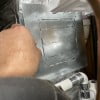
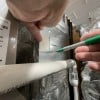
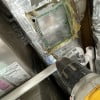
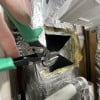
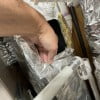
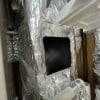

- Mount the UV Air Purifier in the Ductwork Cutout. Secure the Electrical Connections.
With the duct cutout finished and prepped, gently pass the UV unit prior to installing the bulb to check for fit. The unit should slide in easily and seal to the outer surface of the ductwork without gaps. If the hole is over-sized, repair with spare sheet metal and foil tape +/- screws.
Once the fit is verified, carefully install the UV bulb. Use care not to touch the glass surface of the bulb with your bare hands. Oils from your skin can cause hot spots on the glass with bulb use and shorten the life of the bulb. If you do accidentally touch the bulb glass, wipe with isopropyl alcohol and a clean cotton cloth to remove the oil.
With bulb installed, carefully slide the unit into the mounting cutout. Connect the power supply or cord to check bulb function. Do not check the bulb function outside of the ductwork and do not look at the bulb directly as eye damage can quickly occur with strong UV-C exposure.
If the bulb is functional, secure the unit to the duct using the supplied or suitable sheet metal screws. Route the power cord or wires out of the way and to the power source or outlet. Use cable tie to secure the wiring or cord as needed.
If you are using a 24v system you will need a 24v transformer. There are two main options for transformers – a simple plugin unit with screw wire terminals and a hardwire transformer that is mounted over an electrical box.
For most the plugin connected unit will be more convenient to use. These outlet mounted unit tend to dislodge from their outlet. Use the ground hole mount screw if available to secure the unit.
With the unit mounted and wiring secure, turn your furnace back on. Check the inspection window to ensure the UV bulb is on and the unit is working. Some units feature air-sensing switches and cycling programs to turn the bulb off while the furnace fan is off or to cycle off the UV unit for periods of time.
Although these features are intended to increase UV bulb life, I’m not convinced. The manufacturer of the unit I installed recommends leaving the unit on to extend the life of the UV bulb and ballast. Either way bulbs will loose they intensity over time and should probably be replaced every couple years.


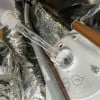
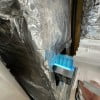
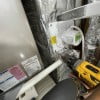
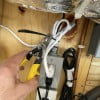
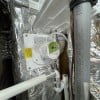


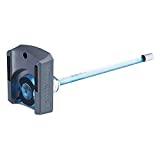
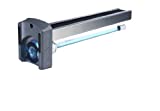
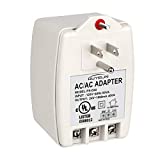
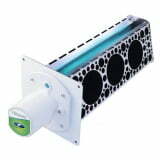
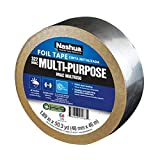
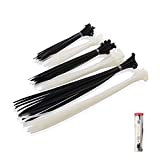
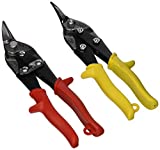
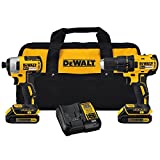
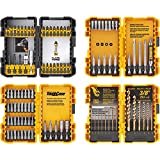
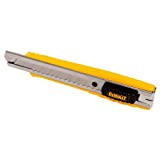
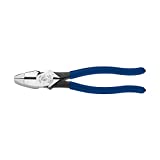
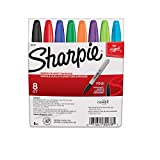
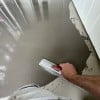
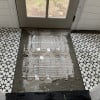
GIPHY App Key not set. Please check settings